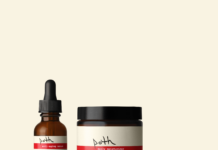When you hear the word “shochu” – what do you think?
Perhaps you think, “what?” (I did).
Or.
You might then confuse it with the Korean alcoholic beverage soju (I also did this).
I do not consider myself a distilled spirits noob, however, I quickly learned that I am, in fact, a shochu neophyte. I wanted to change that and share the knowledge, so I spoke to Joshin Atone, the Director of Brand & Product Design at SG Shochu, to break it all down.
Atone started with the basics, differentiating shochu, sake, and soju. He explained that shochu and sake originated in Japan while soju comes from Korea. Sake is similar to wine in that it’s a brewed beverage, but both soju and shochu are distilled spirits.
“Authentic shochu is made using koji and is typically distilled once, with nothing added after distillation except for water, while most soju is continuously distilled and often contains sweeteners or additional flavorings after distillation,” Atone explained.
Inevitably, I did not know what koji was.
According to Atone, koji is a mold vital to Japanese fermentation.
“The use of koji allows for a longer fermentation period, allowing for complexity to develop in flavor, and allows for the ABV in the mash to rise higher than typical distilled spirits,” Atone said.
That’s why shohcu has a higher alcohol by volume (ABV) than sake.
SG Shochu’s lineup includes three varieties: The SG Shochu KOME- ABV 40%, IMO-ABV 38%, and MUGI-ABV 40%. KOME, IMO, and MUGI are Japanese words for rice, sweet potato, and barley, in that order.
Inexorably, I had to see and taste what these were all about.

Over a taste-testing, one tester described the SG Shochu KOME as, “sake with balls.” I would agree, but because I’m a feminist, I’d describe it as sake with a very fruitful set of ovaries.
Shochu: A Boozy Spirit Chameleon
Published 09 22
Hits 267
Atone described the expression as having a “floral nose with clean, crisp profile—think distilled ginjo sake,” and he recommended using it like vodka or gin in cocktails.
The SG Shochu IMO, which is made from a rare purple sweet potato known as Eimurasaki, felt like a more tropically oriented drink. It was validating to my tastebuds to hear Atone suggest using IMO in place of tequila or rum in cocktails.

Verdict: I would revisit all of the expressions again, and am excited to try them in my favorite cocktails.
Atone said Shochu highballs are a great way to start for those who have never tried the spirit, adding “the carbonation brings up the aromas quite nicely.”
Follow writer and producer @emilydeciccio on Twitter for her latest articles and content.









